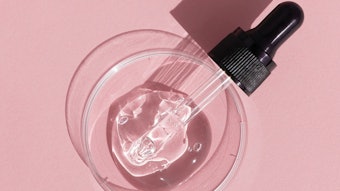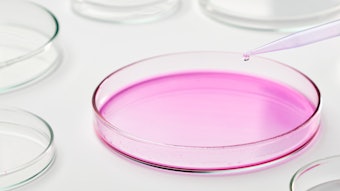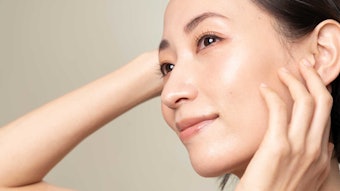
Anti-aging Mechanism Research
Skin aging is a natural, highly varied and complex process. Decoding the connection of the internal mechanisms that cause aging is essential to alleviate visible effects of aging such as diminished hydration, impaired oiliness, rough texture, reduced elasticity, uneven skin tone and wrinkles.
With the above in mind, the effect mechanisms of HyActive (INCI: Sodium Hyaluronate), a low molecular weight sodium salt, were studied at molecular and cellular levels in laboratories, while placing an emphasis on monitoring their effect in vivo. These outputs were then compared to produce ingredients with evidence-based efficacy that is explained on a scientific basis.
A comprehensive and integrated approach enabled the research team to isolate the most important information in terms of the relationship between internal physiological mechanisms from the large quantity of data obtained on each ingredient. This helps to decode even very complex mechanisms and subsequently to interpret them clearly, place them in context and apply them. In doing so, in vitro data with no pronounced link to the visible sign of aging affected must not be lost. Rather, this information must be sourced in further work to develop new raw materials that complement the effects of existing ingredients and thus encompass skin aging issues in all their complexity and intricateness.
HyActive
Laboratory in vitro tests on skin cells using modern methods of molecular biology have revealed that HyActive promotes the synthesis of hyaluronic acid by means of the increased expression of the relevant synthase in addition to activating the enzyme β-glucocerebrosidase, activating the synthesis of extracellular components, inhibiting their excessive degradation and stabilizing the regular structuring of collagen fibres by activating transglutaminase.
The dominant result expected in the in vivo study was wrinkle reduction and improved hydration. The reduction of wrinkles has been confirmed by in vivo tests, as shown in v and a significant skin texture smoothing was also seen accompanied by a positive pro-desquamatory effect, as shown in Figure 2. This last effect has a clear causal link with the smoothing effect and, at a molecular level, is triggered by the activation of proteolysis.
Relating the Research
It was found that proteolysis is inhibited (the degradation of extracellular components is decreased) and not activated, which conflicts with the above findings. However, the activation of non-specific proteases does not necessarily exclude the inhibition of substrate-specific matrices of metalloproteinases.
It may be thought that the increased content of water binding hyaluronic acid in the skin and the increased natural ceramide barrier (the activation of β-glucocerebrosidase) would result in an increase in surface hydration, but this is not true. Unchanged hydration in the upper parts of the epidermis does not reflect the effect of hydration in the deeper epidermal layers.
Here, preference must be given to in vivo evidence. In this light, it is necessary to complement the portfolio to offer more options for the comprehensive tackling of skin aging issues. For example, HyActive could be complemented by a product with greater hydration of the upper skin layer. That said, it should be noted that in the process of skin aging everything relates to everything, and everything interacts. There is no point in trying to change this paradigm and compartmentalize artificially.
To look younger for longer, the aging process must be first decoded in all its breadth before proceeding accordingly. It is not enough to focus on one visible sign or on one mechanism of aging. Formulation chemists must have the opportunity to find a conceptual solution capable of addressing not only selected signs of aging, but also the problem of skin aging in its entirety.
Disclaimer:
The above paid-for content was produced by and posted on behalf of the Sponsor. Content provided is generated solely by the Sponsor or its affiliates, and it is the Sponsor’s responsibility for the accuracy, completeness and validity of all information included. Cosmetics & Toiletries takes steps to ensure that you will not confuse sponsored content with content produced by Cosmetics & Toiletries and governed by its editorial policy.









